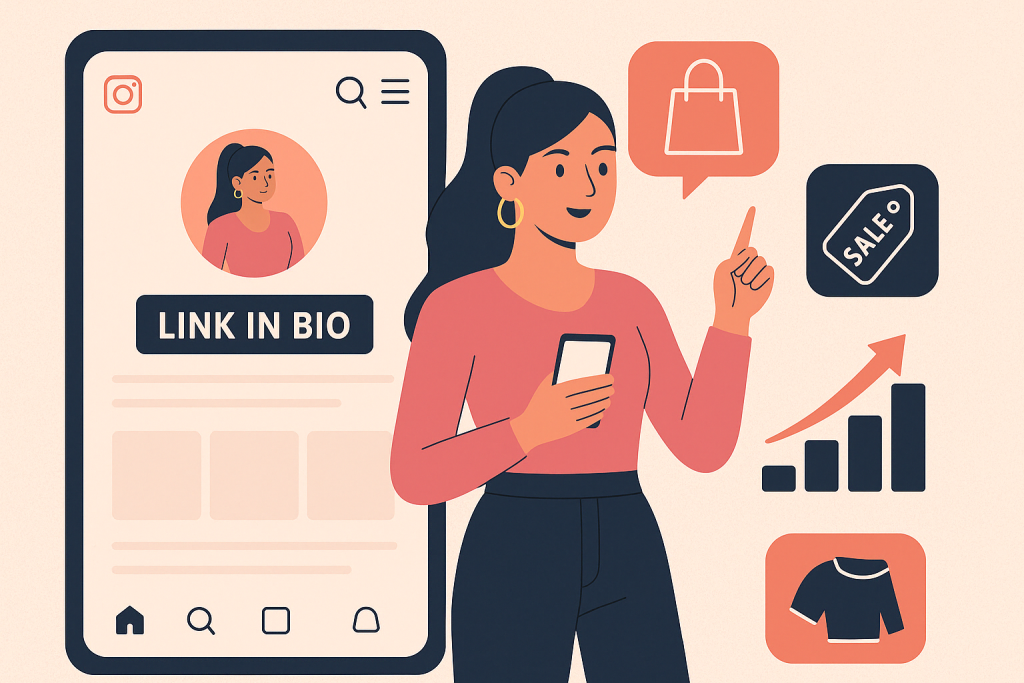How Instagram Influencers Drive Fashion Sales Without Links in Posts
In an ecosystem where direct linking in feed posts isn’t allowed, Instagram influencers, particularly in fashion and activewear, have developed a sophisticated, multi-channel strategy to convert attention into sales. Despite this key limitation, influencers remain central to digital commerce, using Instagram’s evolving features, community-building tactics, and off-platform tools to fuel substantial business growth.
This article breaks down the exact mechanics of how influencers drive sales, the business model behind growing a fashion-focused Instagram following, and real-life case studies that show these strategies in action.
The Limitation: No Clickable Links in Feed Posts
Instagram posts do not allow clickable URLs in captions. This constraint has forced influencers and brands to adopt alternative pathways to guide followers toward purchases. However, instead of being a limitation, this has led to creative and deeply engaging marketing ecosystems.
The Business Model of Instagram Fashion Influencers
Growing a large Instagram following is no longer just about popularity, it’s a business asset. Here’s how the business model works:
1. Audience Building as Asset Development
- Influencers attract niche audiences by curating high-quality content centered around a lifestyle, fashion, fitness, athleisure, or minimal luxury.
- Growth is driven by regular posting, trends (e.g., “GRWM” – get ready with me), and collaborations.
Example: Fitness influencer Krissy Cela, co-founder of activewear brand OYSHO by Tone & Sculpt, grew her following to 3 million+ by sharing workouts, athleisure looks, and educational content. Her brand is now a multi-million-dollar business.
Sales Conversion Strategies Without Feed Links

1. Link in Bio
The bio is the single clickable spot on a profile. Influencers often use link-in-bio tools (like Linktree, Beacons, or their own website landing pages) to offer multiple options, shopping links, affiliate products, blog posts, and discount codes.
Example: Fashion influencer Brittany Xavier uses a custom bio link that takes followers to a personalized shopping page where every outfit she posts can be found.
2. Instagram Stories with Link Stickers
Once available only to accounts with 10K+ followers, Instagram now allows all users to add link stickers in Stories. Influencers drive purchases by:
- Using “Swipe Up” style CTAs
- Posting “Shop my look” Story sets after publishing a post
- Creating highlight reels for evergreen product links
Example: Jen Selter, known for fitness content, frequently uses Story stickers to promote new leggings, directing followers to partner brand websites.
3. Instagram Shopping Features
Approved business accounts can tag products in posts and reels, turning content into mini storefronts.
- Users can tap the product tag and see pricing and product info within the app.
- Instagram redirects them to the merchant’s site or allows in-app checkout (in supported regions).
Case Study: Gymshark, a $1.5 billion activewear brand, leveraged a network of fitness influencers using shoppable posts and branded hashtags like #Gymshark66 to promote product launches.
4. “Link in Bio” Calls to Action
Posts often include captions like:
- “Outfit details in bio 🔗”
- “Shop my look – link in bio 💕”
- “New drop live – don’t miss it!”
This keeps users engaged while pushing them toward the conversion channel.
5. Direct Messages (DMs)
Smaller influencers often use DMs to:
- Answer sizing or style questions
- Share discount codes
- Close sales manually
Example: Boutique activewear sellers like Halara or Alphalete encourage DMs for exclusive drops or early access to limited collections.
6. Promo Codes & Affiliate Marketing
- Influencers share unique discount codes tied to affiliate programs.
- Brands can track sales generated through each influencer.
- This model incentivizes both parties: influencers earn commission, brands gain measurable ROI.
Example: Fitness model Whitney Simmons uses codes like “WHIT10” across stories, posts, and YouTube. She was one of the faces of Gymshark’s influencer-led growth strategy.
7. Sponsored Content & Brand Partnerships
Brands pay influencers per post, Story, or campaign, regardless of direct sales. This is often based on:
- Audience size
- Engagement rate
- Content quality
- Niche relevance
Case Study: Revolve, the fashion retailer, famously partners with top influencers for its #RevolveAroundTheWorld trips, leading to a measurable boost in social buzz and product visibility.
8. Launching Personal Brands
With a large, loyal audience, many influencers transition from brand partners to brand owners.
Examples:
- Tammy Hembrow launched Saski Collection, an activewear label now sold globally.
- Grace Beverley founded TALA, a sustainable activewear brand, after building a massive fitness following.
They use the same Instagram-driven playbook: engaging content, bio links, affiliate support, and influencer-style storytelling.
Real-Life Data: Influence in Action
Shopify Data on Influencer Marketing
- Influencer marketing delivers 11x higher ROI than traditional banner ads.
- Fashion & beauty are the top industries for Instagram influencer ROI, with conversion rates up to 6.7% when paired with exclusive discount codes.
LTK (formerly LIKEtoKNOW.it)
This influencer monetization platform reports that:
- 80% of their fashion sales come from Instagram traffic.
- The average fashion influencer drives $2,000 to $20,000/month through link-in-bio traffic and affiliate tools.
Conclusion: The Engine Behind Instagram Commerce
Even without direct linking in posts, Instagram influencers in fashion and activewear have turned limitations into strategy. By integrating features like Stories, Shopping tags, and link-in-bio tools with compelling content and strategic brand partnerships, they effectively move their followers from passive viewers to active shoppers.
The follower count is just the start, the real business lies in how that attention is activated.